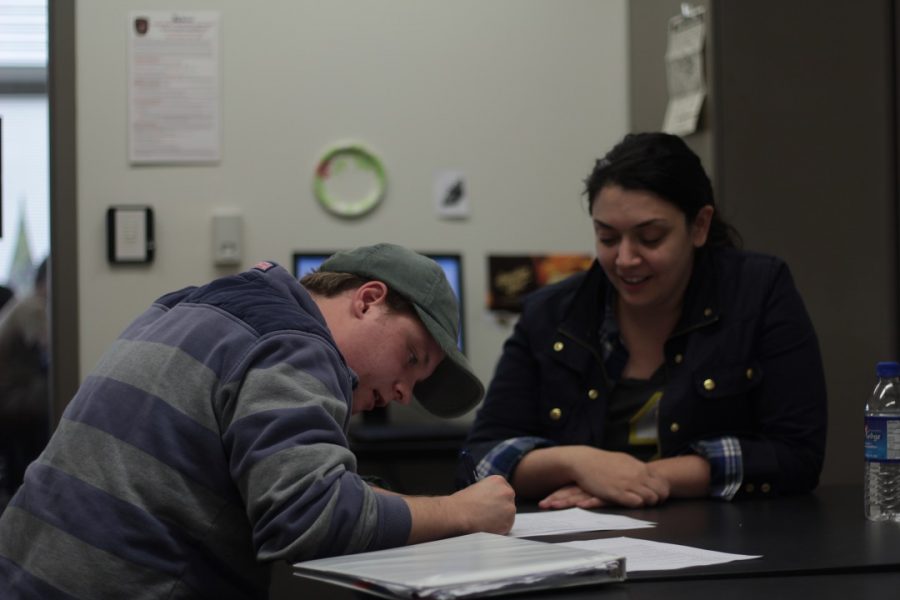Engagement matters with students, faculty
Faculty on campus engage students every day.
November 30, 2016
AACC’s strategic plan, or Engagement Matters, encourages faculty to help move students in the right direction so they can complete their community college education.
The plan addresses three goals, Dan Baum, executive director of public relations and marketing, said: to recruit students; to track their progress while they’re here; and to ensure they complete the courses that will get them to the next level of their education.
“Our faculty get that their reaching out to a student … showing interest in a student … sending an email to a student, that is what’s going to continue to make our students successful,” AACC President Dawn Lindsay said.
Engaging students, Lindsay said, means making them feel welcome in the classroom and in the community. One way the college does that is through technology, she said.
For example, the college can keep an eye on students’ progress and then alert them early in the semester of resources on campus if they are struggling, so they can receive the help they need for financial or personal issues.
According to Lindsay, students at high risk of dropping out—those in the campus Student Achievement and Success Program—are more likely to stay in school when a faculty member or administrator intervenes in case of a problem than they are without intervention. The program serves 1,000 students, Lindsay said.
Baum and Lindsay said the most important part of the plan is the faculty’s passion and motivation to lift students to success. Without the faculty buy-in, Lindsay said, the plan would not go anywhere.
“If [a potential faculty member] in an interview says to me, ‘I don’t have a role; if the student’s going to fail, they’re going to fail,’ then they are the wrong instructor for this campus,” Lindsay said. “Our faculty doesn’t believe in that.”
With more than 300 faculty volunteers engaging in the strategic plan, the instructors are broken up into 20 teams, including a student orientation team and another dedicated to engaging students who are taking online classes.
The administration will refresh the plan every three years.
“I see this [plan] as a national model,” Lindsay said. “I see us in three or four years becoming the model for the nation on how to make this work happen.”
Some students said faculty engagement helps.
“The teachers always direct me the right way to answer stuff,” Will Workman, a third-year student, said. “If I have further questions in math class, they send me to the math center and they explain it better.”
Other students have found that the faculty engages them more than they need.
“I think the faculty are fine, but they try too hard,” said third-year student Nick DePietro. “I think most of the students here are part-time, so students don’t have enough time for the faculty.”












